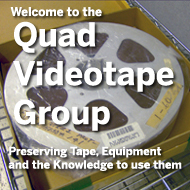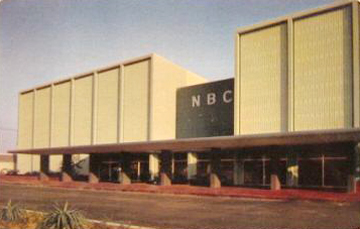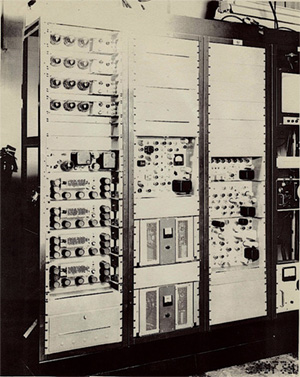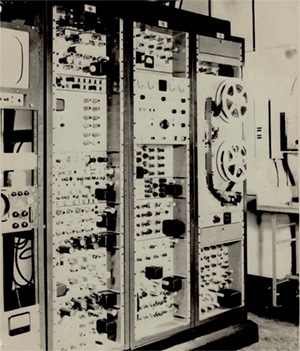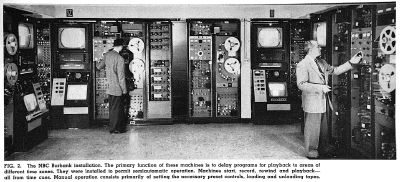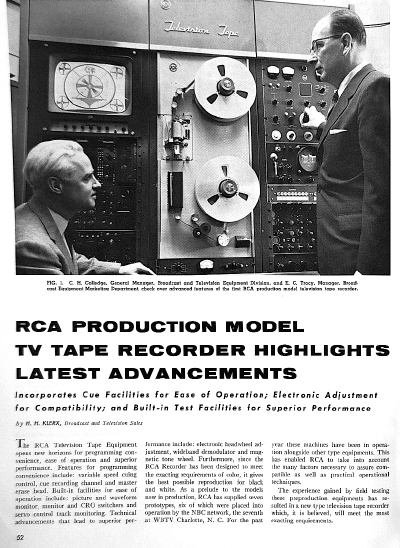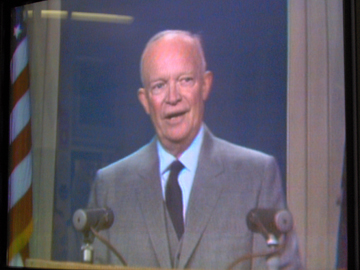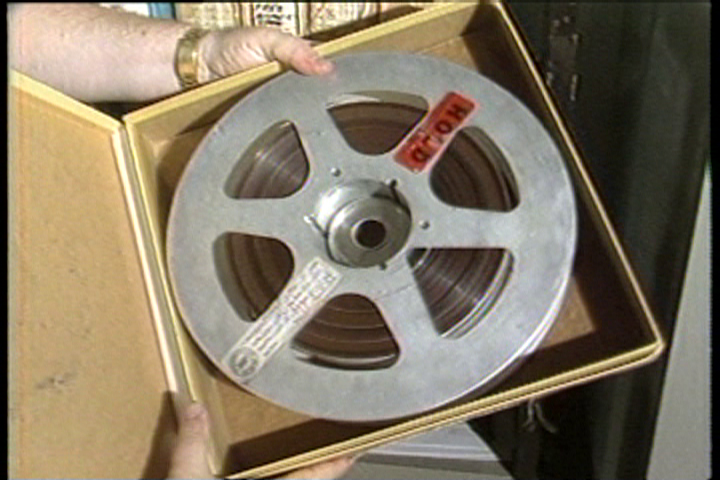| Home |
| Quad History |
| Group History |
| Social Events |
| Discussion List |
| Stories |
| How To Share |
| Tape Help Library |
| Equipment Help Library |
| Manuals On-Line (PDF) |
| Donate |
| Links |
This website and mailing list is focused on 2" Quadruplex Videotape:
The Recorders, Recording, Playback, Maintenance, Equipment Design and Tape Preservation,
and the Preservation of Knowledge about these subjects so that knowledge can
be used by new people today or years from now to preserve the content contained on Quad tapes.
Sharing your experiences working with Quad tapes, recorders, their quirks and foibles can be very helpful in migrating the thousands of aging Quad videotapes now just sitting on shelves at archives world-wide.
Members of this group are working with the Library of Congress National Audio Visual Conservation Center in Culpeper, Virginia at the request of Steven Nease, the Chief Technology Officer for the NAVCC.
Historical stories or personal recollections are welcome. We all need a laugh, an "Ah-Ha!" or to
remember when "that happened to me."
Postcard: Hubert A. Lowman photo #LS-110 in a Series NBC Burbank was dedicated on March 27, 1955. It was completed in 1962. It is scheduled to be replaced by facilities the NBC Universal is building on the Universal lot. The Olive Ave. property will be sold. |
Tuesday, April 28, 2009 is the 51st anniversary of the dedication of Videotape Central at NBC Burbank. The tape facility inside 3000 West Alameda (at Olive Ave.) cost $1.5 million. The first recorders were a pair of Ampex VRX-1000's, two of three units ordered for NBC in 1956 after Ampex unveiled the Mark IV prototype at the NAB convention in April. The third was shipped to RCA's labs in New Jersey, taken apart to see how it worked, and used as the basis for a successful color recording system. NBC began time-zone delay from the Burbank tape facility when Daylight Savings Time began in 1958. |
|
RCA:Leftmost of three racks for NBC, Burbank pre-production VTRX
|
At that time, the facility included one RCA "VTRX" Color Video Tape Recorder, pictured here. This pre-production model was laid out differently than production models due to Burbank's plant needs, according to RCA's A. H. Lind in a 1958 NAB presentation. In the top photo, the left-most rack had power supplies. Second from left had head wheel servos, motor driver amps and capstan driver amps. The third from left had the capstan servo control chassis, tone wheel amp and 240 cycle refference signal. Partially pictured in both photos is a rack with monochrome picture monitor, Cathode Ray Oscilloscope, and selector panel for both monitors. The bottom picture, left rack has the color signal processing equipment. Center rack has a video frequency modulator, four channel RF recording amp, four channel RF playback amp, four channel RF equalizer, channel combining amp, frequency demod and master control panel. The right had rack had the transport, erase power source and audio amps. |
|
Burbank had eight Ampex black-and-white machines that could record color using with RCA Labs hetrodyne electronics. |
Soon, three more RCA Recorders were at work. |
|
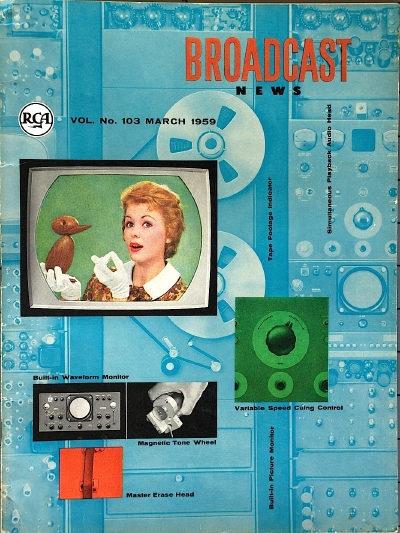 |
In March of 1959, RCA profiled the NBC and WBTV installations in its widely circulated "RCA Broadcast News."
Click on the pages for readable size pages in a new window. |
Click here for larger photo of equipment. |
|
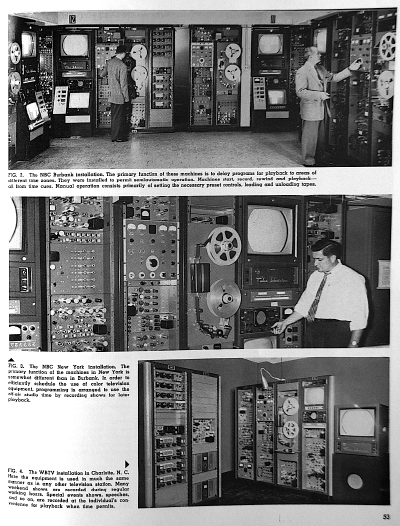 |
Click here to see larger photo of NBC, Burbank installation at top.
|
Click here to see larger photo of NBC, New York installation at center.
|
|
| Click here to see larger photo of WBTV, Charlotte installation at bottom. | |
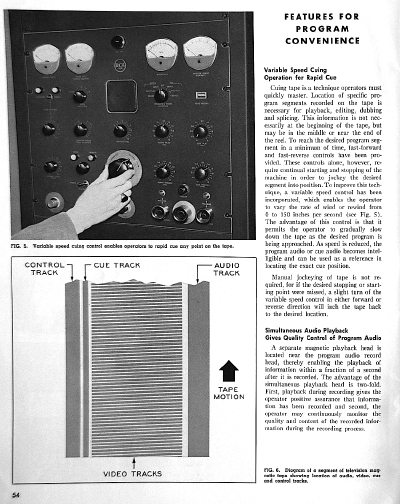 |
Click here to see larger photo of Control Panel.
Click here to see larger photo of Track Layout. |
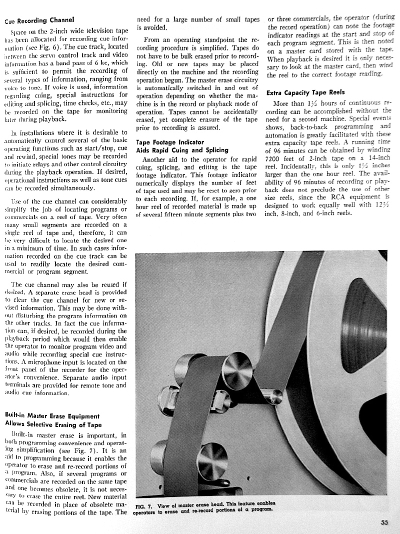 |
Click here to see larger photo of Tape Erase Head area. |
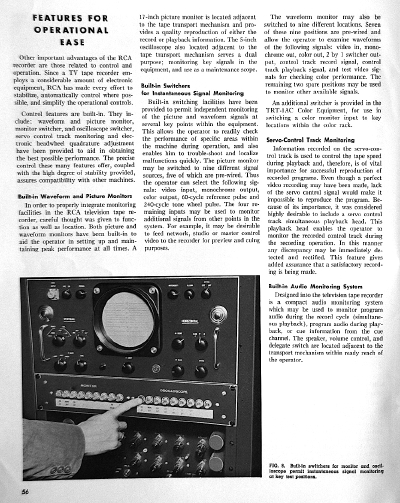 |
Click here to see larger photo of the Monitoring Panel. |
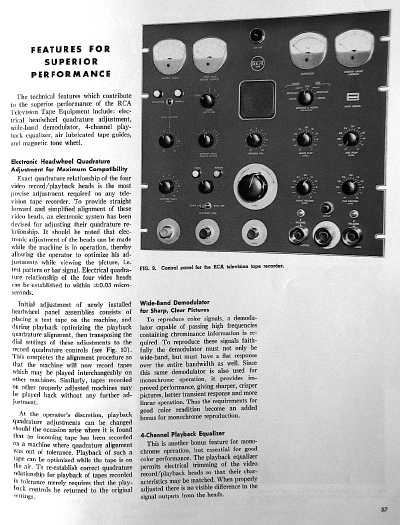 |
Click here to see larger photo of the control panel. |
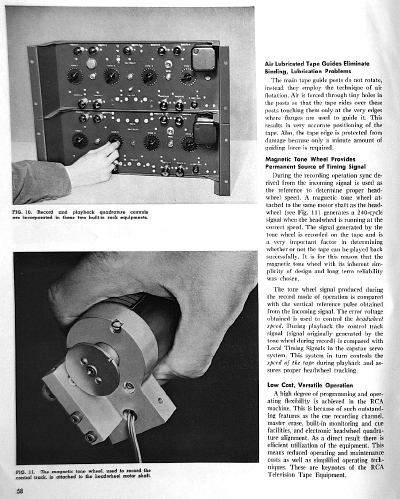 |
Click here to see larger photo of Quadurature control panels
Click here to see larger photo of the tonewheel assembly. |
| Another Quad TapeMilestone: |
|
Monitor Photo of dgital tape restoration by Ed Reitan, Don Kent, Dan Einstien |
May 22, 1958, President Eisenhower becomes the first president to be recorded in color on videotape. The president helped dedicate NBC's brand-new Washington, D.C. facilities housing network and WRC-TV television studios. The Quad recording was made 3,000 miles away on one of the recorders in Burbank, using the RCA Labs color recording method. The Quad tape of this event was located at the Eisenhower Library in Kansas, and is the earliest known color recording discovered to date. The story of its restoration can be found here:
|
|
Pre-recording programs in Burbank happened later. http://www.novia.net/~ereitan/rca-nbc_firsts.html |
|
During the process of trying to recover some of the earliest entertainment programs recorded at NBC Burbank—programs that used the RCA Labs hetrodyne color method—the technology to also recover the Eisenhower tape was developed.
|
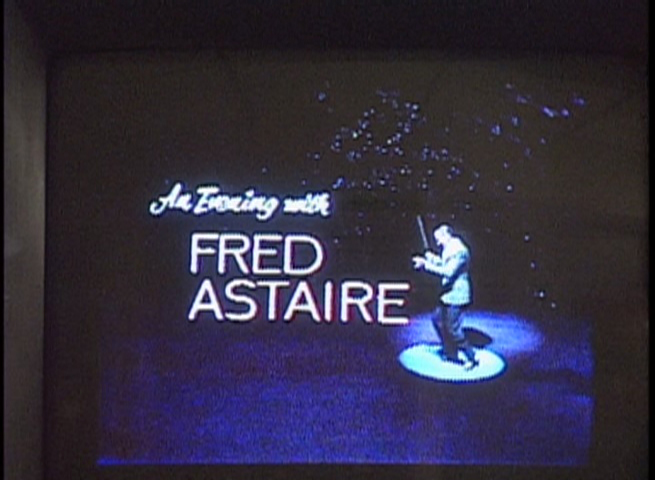 Capture by Don Kent from KTLA Videotape |
But that's another story, to be described on the "Fred Astaire" pages, yet to come. |
